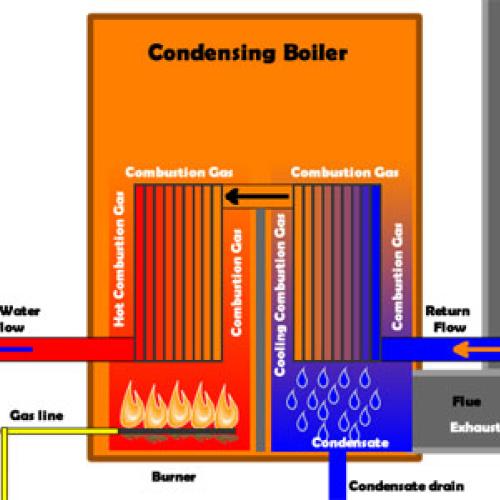The market share of condensing boilers, sometimes called high-efficiency boilers, has increased dramatically over the last several years, thanks in part to utility programs that provide rebates.
Unfortunately, many of these newly installed condensing boilers only achieve a fraction of their expected ideal case energy savings. Center for Energy and Environment’s Senior Mechanical Engineer Russ Landry explains why, and offers solutions to optimize their performance.
When a boiler burns natural gas to heat water, it produces both carbon dioxide and water vapor—which is really just diluted steam. In a conventional boiler all of this steam goes right out the chimney with most of its potential heating energy wasted:
The lost heat up the flue results in an annual fuel utilization efficiency of about 80 percent for conventional boilers. In order to increase boiler efficiency, you need to increase the amount of heat that is transferred to the hot water supplied to the radiators in the building. This will also reduce the temperature of the flue gases exhausting up the chimney. However, reduce the temperature too much, the flue gases will condense, which can lead to rapid corrosion and failure in conventional boilers. For the past 70+ years, boiler system designers and operators have created and maintained conventional boiler systems with operating conditions that prevent condensation.
Click here to keep reading: High Efficiency Should be a Drain: A Closer Look at Condensing Boilers.


